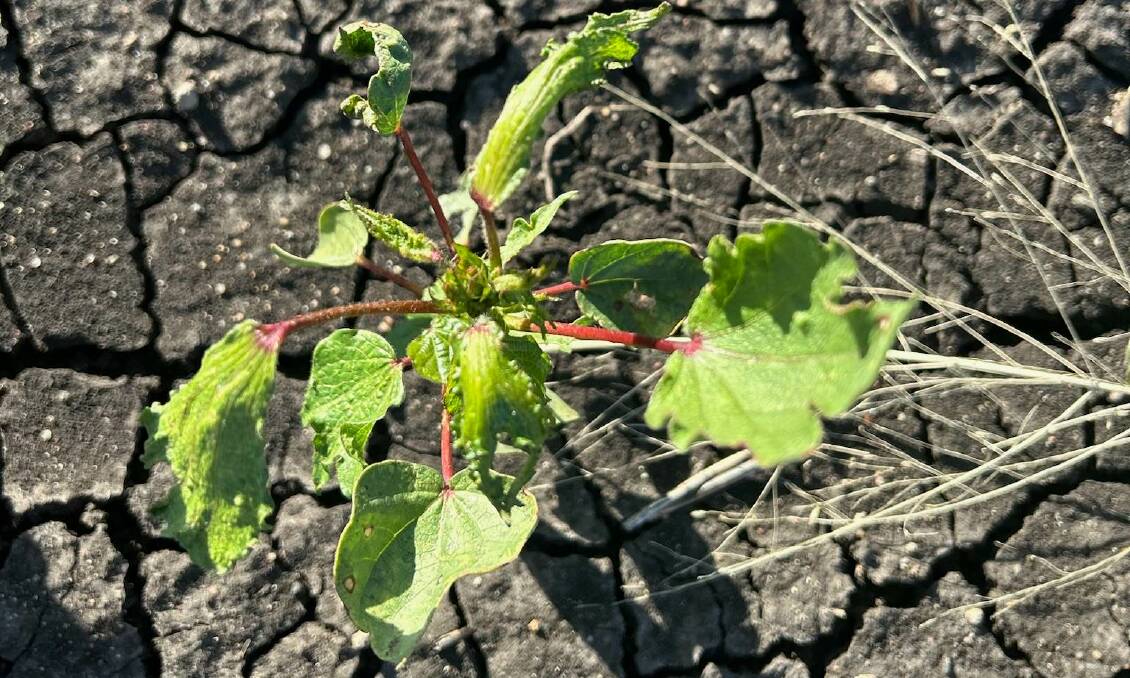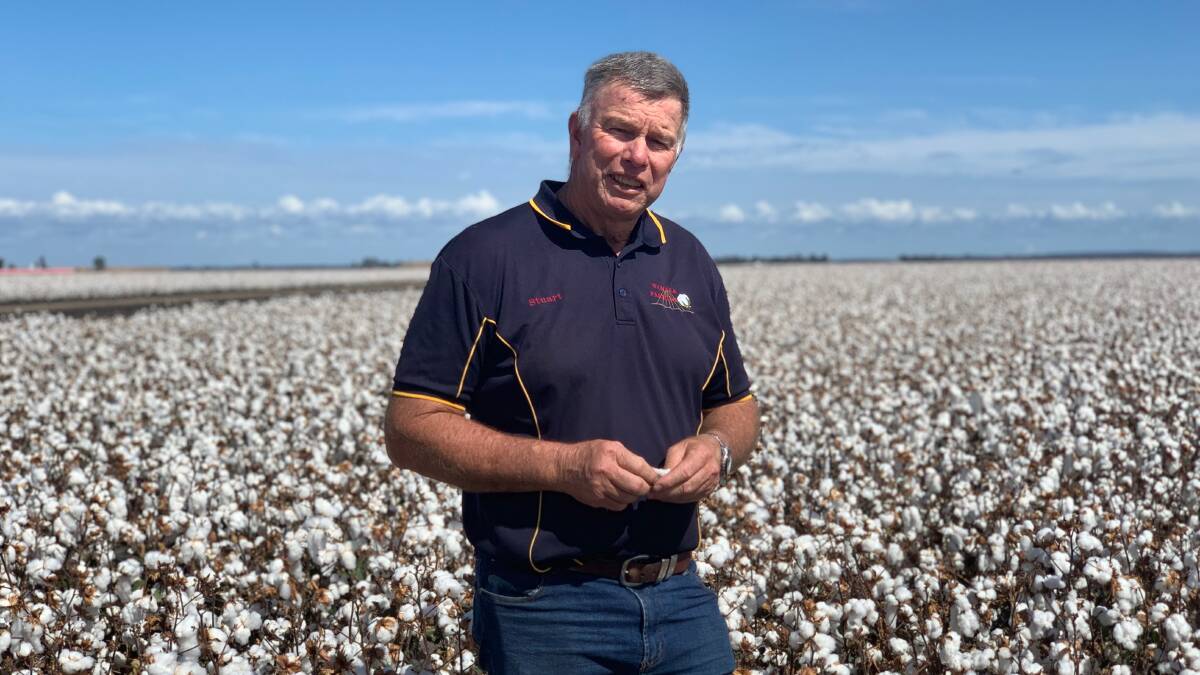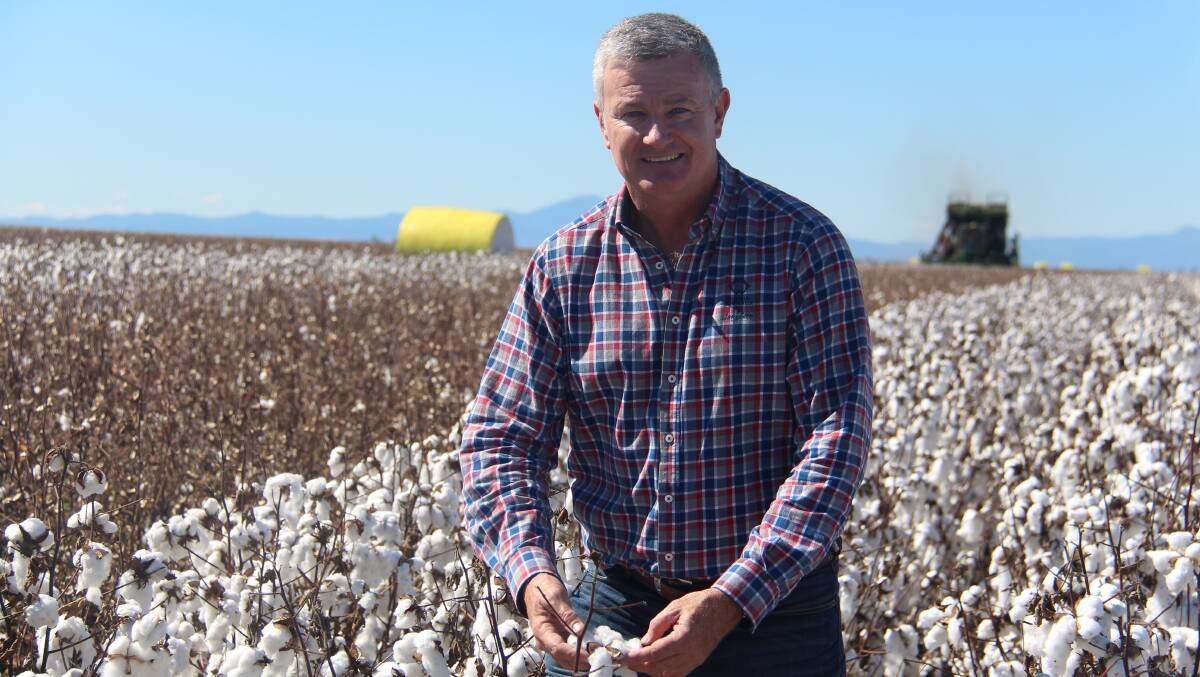
Darling Downs cotton growers have been left devastated after suspected 2,4-D spray drift settled on hundreds of thousands of hectares of crop.
Matthew Holding is an agronomist in the Darling Downs and said he and other consultants had all seen widespread damage, affecting tens of thousands of hectares of cotton.
"We're all agreeing it's the worst spray drift that we've probably ever seen on the eastern Darling Downs," Mr Holding said.
"We're not talking about a few thousand dollars here, we're talking about tens of millions if not hundreds of millions.
"Cotton at the moment is worth $600-$700 per bale, they're hoping to get yields of 10b bale per hectare, that's $7000 per hectare and there'd be 200,000 hectares of cotton on the Darling Downs, on the eastern Darling Downs it's entirely possible, I'm not sure but there would be 60,000-70,000 hectares of cotton potentially."

Stuart Armitage has 1000 acres of affected cotton in the ground at Wamara, Cecil Plains, and said it was time the government banned all sales of 2,4-D.
"It's just beyond the pale now for us, we we've got to be as careful as anything with everything, we keep all spray records, everything's got to be traceable," he said.
"You can't allow this damage to happen.
"People aren't taking responsibility, so someone's got to take that responsibility off them."
MORE READING: Spray drift costs the cotton industry millions each year
Mr Holding said after years of education campaigns, labelling and advertising, the industry was getting "sick and tired" of talking about the dangers of spraying.
"People have been given a lot of chances," he said.
"It's just so easy to walk into a reseller and buy some 2,4-D straight off the shelf, not having to do any paperwork ... and potentially just go out there and cause hundreds of millions of dollars worth of damage.
"If it comes that there needs to be a total ban on the product for a certain number of months per year... there may be no choice."
- Subscribers have access to download our free app today from the App Store or Google Play
Mr Holding said cotton won't be the only crop affected by the suspected drift, with other broadleaf crops also growing in the region.
"There's absolutely nothing you can do," he said.
"Once the damage is in the crop, it's in there - there's absolutely nothing else we can do from a water or fertiliser to try to repair it, the damage is done."
Mr Armitage said his crop was at a "critical stage".
"It's been a tough enough year this year was trying to keep it (the crop) going," he said.
"It's starting to try and grow away and trying to set squares, so it'll lose those squares.
"We're two weeks behind now because of the cold and this has probably set us back at least another week or two, we're starting to get into that stage where we're going to lose yield because of this."

Cotton Australia chief executive officer Adam Kay said the incident will be reported to the national regulator, the Australian Pesticides and Veterinary Medicines Authority.
He said the APVMA will look into the regulation of the product, someone he said needs to be done.
"Some people will say the cotton industry will get this (product) taken away but it's the idiots that are drifting it that will get it taken away, it's the people that can't use this properly," he said.
"If people show they can't utilise a product safely, that's the outcome and that's what the APVMA will be looking at."
ALSO IN NEWS:
Mr Kay said Cotton Australia finance a lot of advertising campaigns to educate not only cotton growers, but all farmers.
"I think there are some people that are out there that are just ignorant to the fact that they're the problem," he said.
"Obviously the withdrawal of the product is the last resort but if someone's livelihood is being impacted it's something that has to be looked at."


